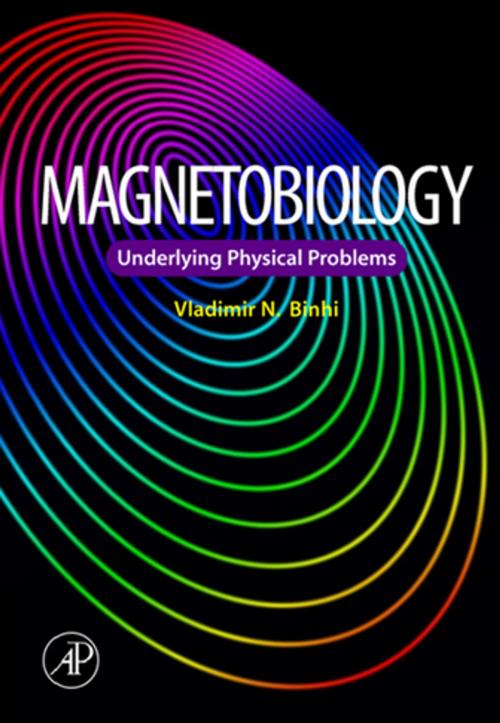Magnetobiology
Underlying Physical Problems
Nonfiction, Science & Nature, Science, Biological Sciences, Biophysics, Biochemistry| Author: | Vladimir N. Binhi | ISBN: | 9780080535739 |
| Publisher: | Elsevier Science | Publication: | March 8, 2002 |
| Imprint: | Academic Press | Language: | English |
| Author: | Vladimir N. Binhi |
| ISBN: | 9780080535739 |
| Publisher: | Elsevier Science |
| Publication: | March 8, 2002 |
| Imprint: | Academic Press |
| Language: | English |
People are immersed in electromagnetic fields from such sources as power lines, domestic appliances, mobile phones, and even electrical storms. All living beings sense electric fields, but the physical origins of the phenomenon are still unclear. Magnetobiology considers the effects of electromagnetic fields on living organisms. It provides a comprehensive review of relevant experimental data and theoretical concepts, and discusses all major modern hypotheses on the physical nature of magnetobiological effects. It also highlights some problems that have yet to be solved and points out new avenues for research.
Why do some people feel unwell during a lightning storm?
Why is there a correlation between the level of electromagnetic background and the incidence of cancer?
Why do so many medical centers use electromagnetic exposures to treat a wide variety of disorders in humans?
The international scientific community is extremely interested in a theory of magnetobiology and the answers to these and other questions, as evidenced by the growing number of research associations in the United States, Europe, and other parts of the world. The World Health Organization (WHO) has named electromagnetic contamination in occupational and residential areas as a stress factor for human beings.
This book stands out among recent texts on magnetobiology because it draws on a strong foundation of empirical and theoretical evidence to explain the various effects of magnetic fields on the human body. It contains the first comprehensive collection of experimental data bearing physical information, frequency and amplitude/power spectra, and original research data on how electromagnetic fields interfere with ions and molecules inside the proteins of living organisms.
- Introduction is written so that it will be understandable to a wide scientific community regardless of their specialisation
- First comprehensive collection of experimental data bearing physical information, frequency and amplitude/power spectra
- Original theoretical research data on the interference of ions and molecules inside proteins
- Appendix covers physical questions most relevant for magnetobiology. In particular there is an original exposition of the magnetic resonance basic principles
People are immersed in electromagnetic fields from such sources as power lines, domestic appliances, mobile phones, and even electrical storms. All living beings sense electric fields, but the physical origins of the phenomenon are still unclear. Magnetobiology considers the effects of electromagnetic fields on living organisms. It provides a comprehensive review of relevant experimental data and theoretical concepts, and discusses all major modern hypotheses on the physical nature of magnetobiological effects. It also highlights some problems that have yet to be solved and points out new avenues for research.
Why do some people feel unwell during a lightning storm?
Why is there a correlation between the level of electromagnetic background and the incidence of cancer?
Why do so many medical centers use electromagnetic exposures to treat a wide variety of disorders in humans?
The international scientific community is extremely interested in a theory of magnetobiology and the answers to these and other questions, as evidenced by the growing number of research associations in the United States, Europe, and other parts of the world. The World Health Organization (WHO) has named electromagnetic contamination in occupational and residential areas as a stress factor for human beings.
This book stands out among recent texts on magnetobiology because it draws on a strong foundation of empirical and theoretical evidence to explain the various effects of magnetic fields on the human body. It contains the first comprehensive collection of experimental data bearing physical information, frequency and amplitude/power spectra, and original research data on how electromagnetic fields interfere with ions and molecules inside the proteins of living organisms.
- Introduction is written so that it will be understandable to a wide scientific community regardless of their specialisation
- First comprehensive collection of experimental data bearing physical information, frequency and amplitude/power spectra
- Original theoretical research data on the interference of ions and molecules inside proteins
- Appendix covers physical questions most relevant for magnetobiology. In particular there is an original exposition of the magnetic resonance basic principles















